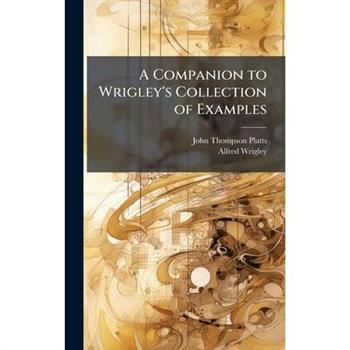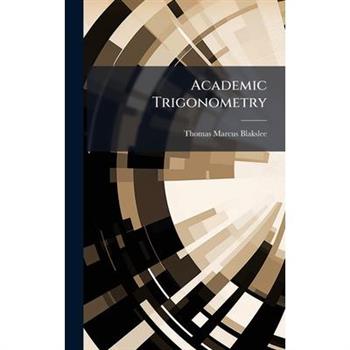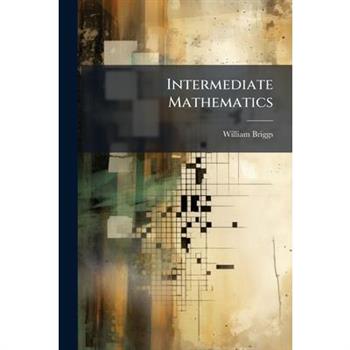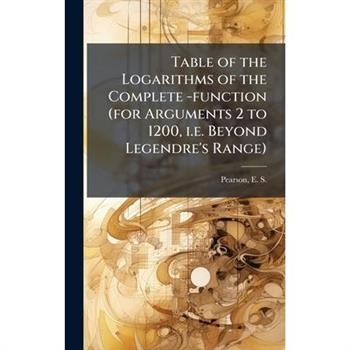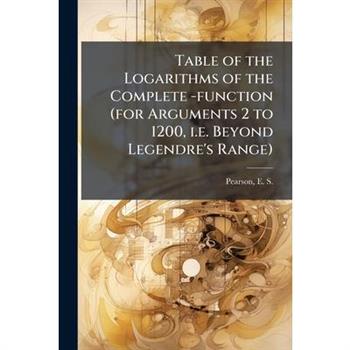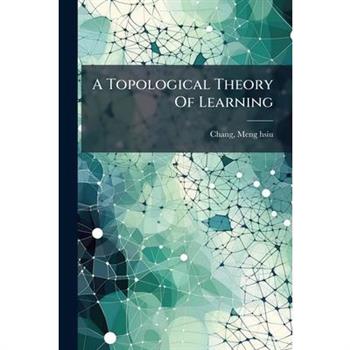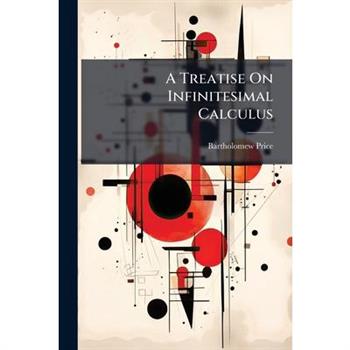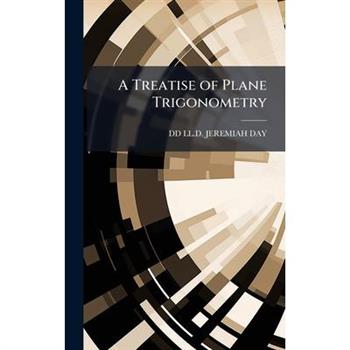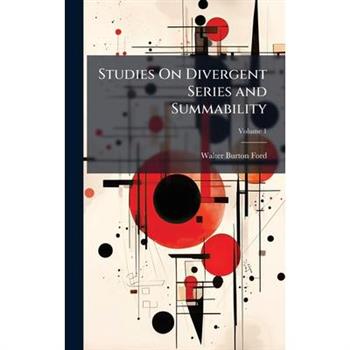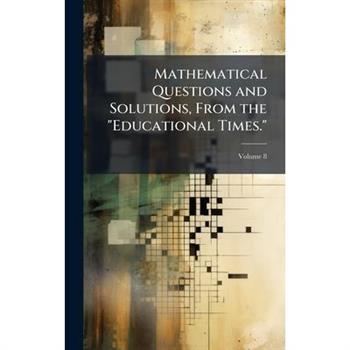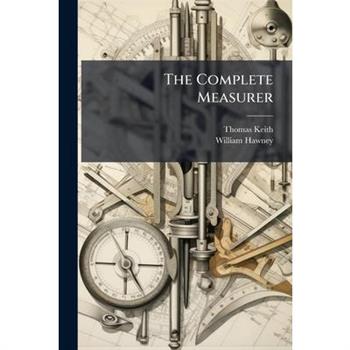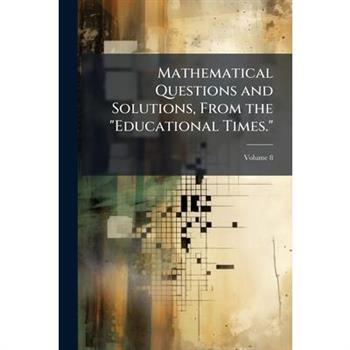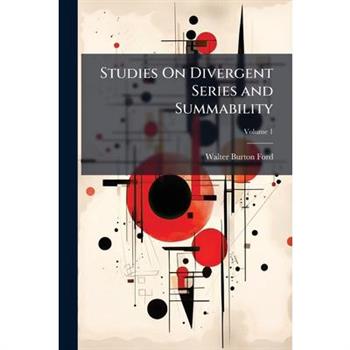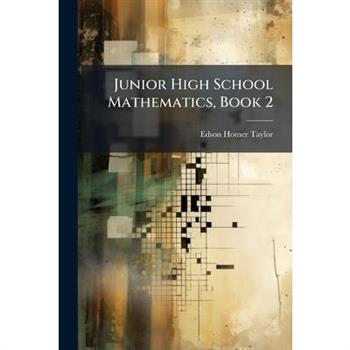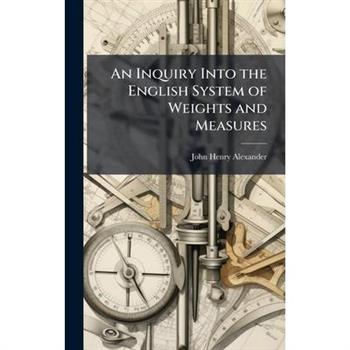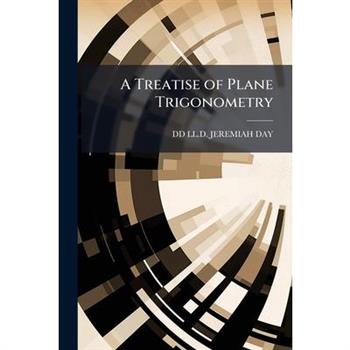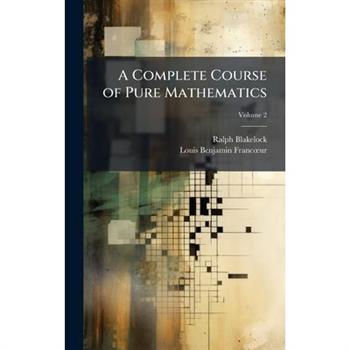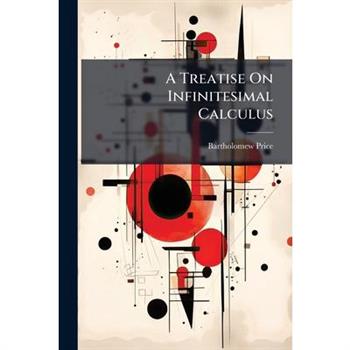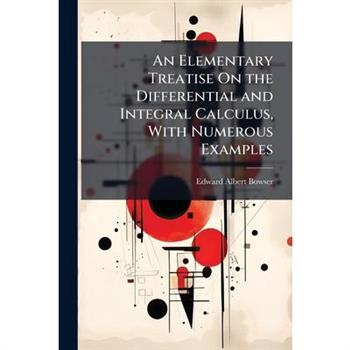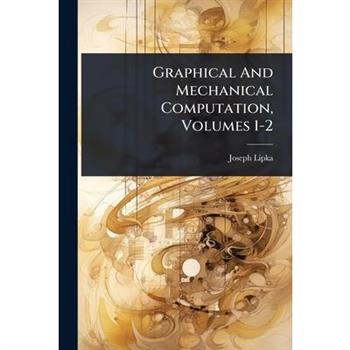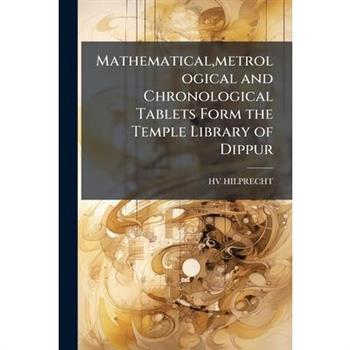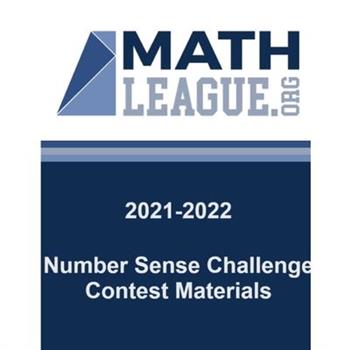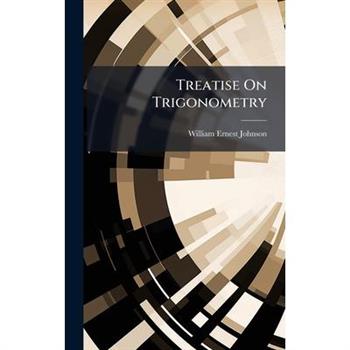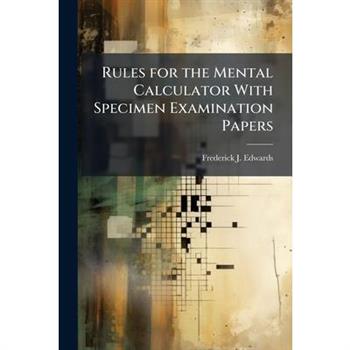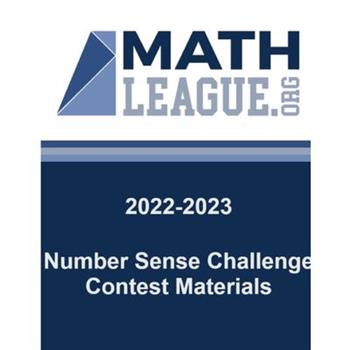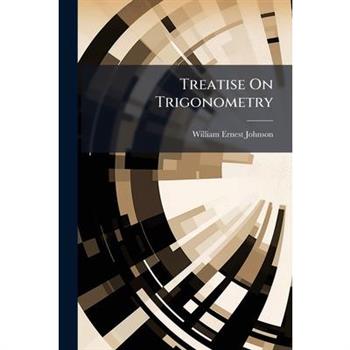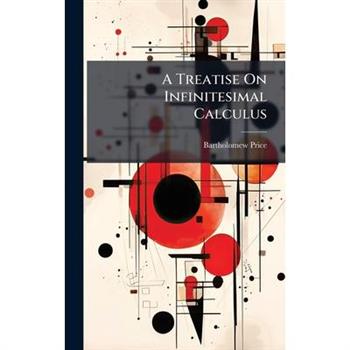A Companion to Wrigley’s Collection of Examples
"A Companion to Wrigley's Collection of Examples" by John Thompson Platts and Alfred Wrigley, originally published in 1861, offers a fascinating glimpse into mathematical education of the era. This book serves as a guide through a collection of mathematical problems, illustrating various processes and methods of solution. Designed to complement Wrigley's renowned compilation of examples, this companion aims to enhance understanding and proficiency in mathematics. This work provides valuable insights into the teaching and learning methodologies prevalent in the 19th century, making it an interesting resource for mathematics enthusiasts, educators, and historians of mathematics. Its enduring relevance lies in its demonstration of fundamental mathematical principles through practical examples.This work has been selected by scholars as being culturally important, and is part of the knowledge base of civilization as we know it. This work was reproduced from the original artifact, and remains as true to the original work as possible. Therefore, you will see the original copyright references, library stamps (as most of these works have been housed in our most important libraries around the world), and other notations in the work.This work is in the public domain in the United States of America, and possibly other nations. Within the United States, you may freely copy and distribute this work, as no entity (individual or corporate) has a copyright on the body of the work.As a reproduction of a historical artifact, this work may contain missing or blurred pages, poor pictures, errant marks, etc. Scholars believe, and we concur, that this work is important enough to be preserved, reproduced, and made generally available to the public. We appreciate your support of the preservation process, and thank you for being an important part of keeping this knowledge alive and relevant.
Academic Trigonometry
Academic Trigonometry: Plane and Spherical offers a comprehensive exploration of trigonometric principles and their applications. Written by Thomas Marcus Blakslee, this book serves as an invaluable resource for students and educators alike. Delving into both plane and spherical trigonometry, it provides a structured approach to understanding fundamental concepts and problem-solving techniques. This edition is designed to enhance mathematical proficiency and comprehension, making it an essential addition to any mathematics curriculum or personal study library. Its enduring appeal lies in its clarity and thoroughness, ensuring a solid foundation in trigonometry for generations to come.This work has been selected by scholars as being culturally important, and is part of the knowledge base of civilization as we know it. This work was reproduced from the original artifact, and remains as true to the original work as possible. Therefore, you will see the original copyright references, library stamps (as most of these works have been housed in our most important libraries around the world), and other notations in the work.This work is in the public domain in the United States of America, and possibly other nations. Within the United States, you may freely copy and distribute this work, as no entity (individual or corporate) has a copyright on the body of the work.As a reproduction of a historical artifact, this work may contain missing or blurred pages, poor pictures, errant marks, etc. Scholars believe, and we concur, that this work is important enough to be preserved, reproduced, and made generally available to the public. We appreciate your support of the preservation process, and thank you for being an important part of keeping this knowledge alive and relevant.
sona nasin pi nanpa Okitonon - mI’tatmey meqQeD
Eine Einf羹hrung in die Algebra der Oktonionen mit philosophischer Hinterfragung in den folgenden drei Sprachen: Sitelen Pona, Toki Pona und Klingonisch. Dabei handelt es sich um die ?bersetzung des Buchs "sona nasin pi nanpa Okitonon - Philosophy of Octonions", das unter der ISBN 978-3-7693-1156-3 urspr羹nglich auf Toki Pona, englisch und deutsch erschienen ist. Fazit: Oktonionen sind Summen aus Parallelogrammen und Parallelepipeden. Sie sind dreidimensionale Objekte. An introduction into the algebra of octonions with a philosophical examination in the following three languages: Sitelen Pona, Toki Pona, and Klingon. This is the translation of the book "sona nasin pi nanpa Okitonon - Philosophy of Octonions" which was originally published in Toki Pona, English, and German with the ISBN 978-3-7693-1156-3. And the conclusion is: octonions are linear combinations of parallelograms and parallelepipeds. They are three-dimensional objects.
Intermediate Mathematics
"Intermediate Mathematics: A Guide To The Mathematics Of The Intermediate Examinations In Arts And Science Of The University Of London" is a comprehensive resource designed to prepare students for intermediate-level mathematics examinations. Authored by William Briggs, this book aims to provide clear explanations and thorough coverage of the essential topics. Originally published as part of the 5th thousand print run, this edition continues to serve as a valuable study aid for students pursuing degrees in arts and science at the University of London. The text covers a range of mathematical concepts necessary for success in these examinations, offering detailed guidance and practice examples to enhance understanding and proficiency. This book remains relevant for those seeking a solid foundation in intermediate mathematics.This work has been selected by scholars as being culturally important, and is part of the knowledge base of civilization as we know it. This work was reproduced from the original artifact, and remains as true to the original work as possible. Therefore, you will see the original copyright references, library stamps (as most of these works have been housed in our most important libraries around the world), and other notations in the work.This work is in the public domain in the United States of America, and possibly other nations. Within the United States, you may freely copy and distribute this work, as no entity (individual or corporate) has a copyright on the body of the work.As a reproduction of a historical artifact, this work may contain missing or blurred pages, poor pictures, errant marks, etc. Scholars believe, and we concur, that this work is important enough to be preserved, reproduced, and made generally available to the public. We appreciate your support of the preservation process, and thank you for being an important part of keeping this knowledge alive and relevant.
Table of the Logarithms of the Complete -function (for Arguments 2 to 1200, i.e. Beyond Legendre's Range)
"Table of the Logarithms of the Complete -function" by E.S. Pearson presents an extensive collection of logarithmic values for the gamma function. Covering arguments from 2 to 1200, this volume expands significantly beyond the range provided by Legendre. A valuable resource for mathematicians, statisticians, and scientists, this detailed table facilitates precise calculations involving the gamma function, crucial in various fields. This work stands as a testament to the meticulous computation and dedication of its author, providing a practical tool for advanced mathematical analysis and research.This work has been selected by scholars as being culturally important, and is part of the knowledge base of civilization as we know it. This work was reproduced from the original artifact, and remains as true to the original work as possible. Therefore, you will see the original copyright references, library stamps (as most of these works have been housed in our most important libraries around the world), and other notations in the work.This work is in the public domain in the United States of America, and possibly other nations. Within the United States, you may freely copy and distribute this work, as no entity (individual or corporate) has a copyright on the body of the work.As a reproduction of a historical artifact, this work may contain missing or blurred pages, poor pictures, errant marks, etc. Scholars believe, and we concur, that this work is important enough to be preserved, reproduced, and made generally available to the public. We appreciate your support of the preservation process, and thank you for being an important part of keeping this knowledge alive and relevant.
Freshman Mathematics
"Freshman Mathematics: An Instruction And Reference Book In The Principles And Methods Of Computation, Trigonometry, Applied Algebra, And Coordinate Geometry" by William Richard Ransom is a comprehensive guide designed for students embarking on their mathematical journey. This book provides a solid foundation in essential mathematical principles, covering a range of topics from basic computation to more advanced concepts in trigonometry, algebra, and coordinate geometry. Intended as both a textbook and a reference, it offers clear explanations and practical methods to aid students in mastering these fundamental areas of mathematics. It is an invaluable resource for anyone seeking to build a strong understanding of mathematical principles.This work has been selected by scholars as being culturally important, and is part of the knowledge base of civilization as we know it. This work was reproduced from the original artifact, and remains as true to the original work as possible. Therefore, you will see the original copyright references, library stamps (as most of these works have been housed in our most important libraries around the world), and other notations in the work.This work is in the public domain in the United States of America, and possibly other nations. Within the United States, you may freely copy and distribute this work, as no entity (individual or corporate) has a copyright on the body of the work.As a reproduction of a historical artifact, this work may contain missing or blurred pages, poor pictures, errant marks, etc. Scholars believe, and we concur, that this work is important enough to be preserved, reproduced, and made generally available to the public. We appreciate your support of the preservation process, and thank you for being an important part of keeping this knowledge alive and relevant.
Freshman Mathematics
"Freshman Mathematics: An Instruction And Reference Book In The Principles And Methods Of Computation, Trigonometry, Applied Algebra, And Coordinate Geometry" by William Richard Ransom is a comprehensive guide designed for students embarking on their mathematical journey. This book provides a solid foundation in essential mathematical principles, covering a range of topics from basic computation to more advanced concepts in trigonometry, algebra, and coordinate geometry. Intended as both a textbook and a reference, it offers clear explanations and practical methods to aid students in mastering these fundamental areas of mathematics. It is an invaluable resource for anyone seeking to build a strong understanding of mathematical principles.This work has been selected by scholars as being culturally important, and is part of the knowledge base of civilization as we know it. This work was reproduced from the original artifact, and remains as true to the original work as possible. Therefore, you will see the original copyright references, library stamps (as most of these works have been housed in our most important libraries around the world), and other notations in the work.This work is in the public domain in the United States of America, and possibly other nations. Within the United States, you may freely copy and distribute this work, as no entity (individual or corporate) has a copyright on the body of the work.As a reproduction of a historical artifact, this work may contain missing or blurred pages, poor pictures, errant marks, etc. Scholars believe, and we concur, that this work is important enough to be preserved, reproduced, and made generally available to the public. We appreciate your support of the preservation process, and thank you for being an important part of keeping this knowledge alive and relevant.
Table of the Logarithms of the Complete -function (for Arguments 2 to 1200, i.e. Beyond Legendre's Range)
"Table of the Logarithms of the Complete -function" by E.S. Pearson presents an extensive collection of logarithmic values for the gamma function. Covering arguments from 2 to 1200, this volume expands significantly beyond the range provided by Legendre. A valuable resource for mathematicians, statisticians, and scientists, this detailed table facilitates precise calculations involving the gamma function, crucial in various fields. This work stands as a testament to the meticulous computation and dedication of its author, providing a practical tool for advanced mathematical analysis and research.This work has been selected by scholars as being culturally important, and is part of the knowledge base of civilization as we know it. This work was reproduced from the original artifact, and remains as true to the original work as possible. Therefore, you will see the original copyright references, library stamps (as most of these works have been housed in our most important libraries around the world), and other notations in the work.This work is in the public domain in the United States of America, and possibly other nations. Within the United States, you may freely copy and distribute this work, as no entity (individual or corporate) has a copyright on the body of the work.As a reproduction of a historical artifact, this work may contain missing or blurred pages, poor pictures, errant marks, etc. Scholars believe, and we concur, that this work is important enough to be preserved, reproduced, and made generally available to the public. We appreciate your support of the preservation process, and thank you for being an important part of keeping this knowledge alive and relevant.
A Topological Theory Of Learning
"A Topological Theory Of Learning" presents a groundbreaking approach to understanding learning processes through the lens of topology. This work explores how topological concepts can provide new insights into the mathematical foundations of learning, offering a unique perspective on the structure and behavior of learning systems. By applying topological methods, the author develops novel theoretical frameworks for analyzing and designing learning algorithms.Originally published in 1942, this enduring work remains relevant for researchers and students interested in the intersection of mathematics, computer science, and artificial intelligence. It offers a rich foundation for further exploration into the topological underpinnings of machine learning and related fields.This work has been selected by scholars as being culturally important, and is part of the knowledge base of civilization as we know it. This work was reproduced from the original artifact, and remains as true to the original work as possible. Therefore, you will see the original copyright references, library stamps (as most of these works have been housed in our most important libraries around the world), and other notations in the work.This work is in the public domain in the United States of America, and possibly other nations. Within the United States, you may freely copy and distribute this work, as no entity (individual or corporate) has a copyright on the body of the work.As a reproduction of a historical artifact, this work may contain missing or blurred pages, poor pictures, errant marks, etc. Scholars believe, and we concur, that this work is important enough to be preserved, reproduced, and made generally available to the public. We appreciate your support of the preservation process, and thank you for being an important part of keeping this knowledge alive and relevant.
A Topological Theory Of Learning
"A Topological Theory Of Learning" presents a groundbreaking approach to understanding learning processes through the lens of topology. This work explores how topological concepts can provide new insights into the mathematical foundations of learning, offering a unique perspective on the structure and behavior of learning systems. By applying topological methods, the author develops novel theoretical frameworks for analyzing and designing learning algorithms.Originally published in 1942, this enduring work remains relevant for researchers and students interested in the intersection of mathematics, computer science, and artificial intelligence. It offers a rich foundation for further exploration into the topological underpinnings of machine learning and related fields.This work has been selected by scholars as being culturally important, and is part of the knowledge base of civilization as we know it. This work was reproduced from the original artifact, and remains as true to the original work as possible. Therefore, you will see the original copyright references, library stamps (as most of these works have been housed in our most important libraries around the world), and other notations in the work.This work is in the public domain in the United States of America, and possibly other nations. Within the United States, you may freely copy and distribute this work, as no entity (individual or corporate) has a copyright on the body of the work.As a reproduction of a historical artifact, this work may contain missing or blurred pages, poor pictures, errant marks, etc. Scholars believe, and we concur, that this work is important enough to be preserved, reproduced, and made generally available to the public. We appreciate your support of the preservation process, and thank you for being an important part of keeping this knowledge alive and relevant.
An Elementary Treatise On the Calculus
"An Elementary Treatise On the Calculus" by George Alexander Gibson offers a comprehensive introduction to calculus, enriched with practical applications across geometry, mechanics, and physics. This classic text provides a rigorous yet accessible exploration of calculus principles. The book emphasizes understanding through detailed explanations and illustrative examples, making it an invaluable resource for students and educators alike. Gibson's approach integrates theoretical concepts with real-world problems, fostering a deeper appreciation for the power and versatility of calculus. This edition remains essential for anyone seeking a solid foundation in calculus and its applications in the sciences.This work has been selected by scholars as being culturally important, and is part of the knowledge base of civilization as we know it. This work was reproduced from the original artifact, and remains as true to the original work as possible. Therefore, you will see the original copyright references, library stamps (as most of these works have been housed in our most important libraries around the world), and other notations in the work.This work is in the public domain in the United States of America, and possibly other nations. Within the United States, you may freely copy and distribute this work, as no entity (individual or corporate) has a copyright on the body of the work.As a reproduction of a historical artifact, this work may contain missing or blurred pages, poor pictures, errant marks, etc. Scholars believe, and we concur, that this work is important enough to be preserved, reproduced, and made generally available to the public. We appreciate your support of the preservation process, and thank you for being an important part of keeping this knowledge alive and relevant.
A Course of Mathematics ...
"A Course of Mathematics...", Volume 2, by Isaac Dalby, is a meticulously crafted textbook designed for the instruction of officers and cadets at the Royal Military College. Originally published in 1806, this volume represents a comprehensive exploration of mathematical principles essential for military applications. Dalby's work offers a structured approach to understanding advanced mathematical concepts. This volume focuses on specific areas of mathematics critical for military training.This historic text provides valuable insights into the mathematical education provided to military personnel in the early 19th century, offering a unique perspective on the intersection of mathematics and military science. It remains a valuable resource for those interested in the history of mathematical education and its applications in military contexts.This work has been selected by scholars as being culturally important, and is part of the knowledge base of civilization as we know it. This work was reproduced from the original artifact, and remains as true to the original work as possible. Therefore, you will see the original copyright references, library stamps (as most of these works have been housed in our most important libraries around the world), and other notations in the work.This work is in the public domain in the United States of America, and possibly other nations. Within the United States, you may freely copy and distribute this work, as no entity (individual or corporate) has a copyright on the body of the work.As a reproduction of a historical artifact, this work may contain missing or blurred pages, poor pictures, errant marks, etc. Scholars believe, and we concur, that this work is important enough to be preserved, reproduced, and made generally available to the public. We appreciate your support of the preservation process, and thank you for being an important part of keeping this knowledge alive and relevant.
A Complete Course of Pure Mathematics
"A Complete Course of Pure Mathematics, Volume 2" presents a detailed exploration of advanced mathematical concepts, likely focusing on topics such as calculus, mathematical analysis, and related fields. Originally published in 1830, this book provides a glimpse into the mathematical pedagogy and understanding of the era. Authored by Ralph Blakelock and Louis-Benjamin Franc?"ur, this volume would serve as a valuable resource for those interested in the historical development of mathematical thought and instructional methods.This work has been selected by scholars as being culturally important, and is part of the knowledge base of civilization as we know it. This work was reproduced from the original artifact, and remains as true to the original work as possible. Therefore, you will see the original copyright references, library stamps (as most of these works have been housed in our most important libraries around the world), and other notations in the work.This work is in the public domain in the United States of America, and possibly other nations. Within the United States, you may freely copy and distribute this work, as no entity (individual or corporate) has a copyright on the body of the work.As a reproduction of a historical artifact, this work may contain missing or blurred pages, poor pictures, errant marks, etc. Scholars believe, and we concur, that this work is important enough to be preserved, reproduced, and made generally available to the public. We appreciate your support of the preservation process, and thank you for being an important part of keeping this knowledge alive and relevant.
A Treatise On Infinitesimal Calculus
A Treatise on Infinitesimal Calculus: Differential Calculus by Bartholomew Price, originally published in 1857, presents a comprehensive exploration of differential calculus. This historical text delves into the foundational concepts and methodologies of infinitesimal calculus, offering readers a detailed understanding of the subject as it was understood in the mid-19th century. Price's treatise provides rigorous explanations and numerous examples, making it an invaluable resource for mathematicians, historians of science, and anyone interested in the development of calculus. The book stands as a testament to the evolution of mathematical thought and the enduring significance of calculus in scientific inquiry. Its detailed exposition makes it a valuable addition to any mathematical library, showcasing the intellectual landscape of its time.This work has been selected by scholars as being culturally important, and is part of the knowledge base of civilization as we know it. This work was reproduced from the original artifact, and remains as true to the original work as possible. Therefore, you will see the original copyright references, library stamps (as most of these works have been housed in our most important libraries around the world), and other notations in the work.This work is in the public domain in the United States of America, and possibly other nations. Within the United States, you may freely copy and distribute this work, as no entity (individual or corporate) has a copyright on the body of the work.As a reproduction of a historical artifact, this work may contain missing or blurred pages, poor pictures, errant marks, etc. Scholars believe, and we concur, that this work is important enough to be preserved, reproduced, and made generally available to the public. We appreciate your support of the preservation process, and thank you for being an important part of keeping this knowledge alive and relevant.
A Treatise of Plane Trigonometry
"A Treatise of Plane Trigonometry" by Jeremiah Day is a comprehensive exploration of plane trigonometry, designed for students and educators alike. This classic text meticulously covers the fundamental principles and practical applications of trigonometric functions and their relationship to plane geometry. Day's treatise provides a structured approach to understanding trigonometric concepts. This book serves as an invaluable resource for anyone seeking a solid foundation in the essentials of plane trigonometry.This work has been selected by scholars as being culturally important, and is part of the knowledge base of civilization as we know it. This work was reproduced from the original artifact, and remains as true to the original work as possible. Therefore, you will see the original copyright references, library stamps (as most of these works have been housed in our most important libraries around the world), and other notations in the work.This work is in the public domain in the United States of America, and possibly other nations. Within the United States, you may freely copy and distribute this work, as no entity (individual or corporate) has a copyright on the body of the work.As a reproduction of a historical artifact, this work may contain missing or blurred pages, poor pictures, errant marks, etc. Scholars believe, and we concur, that this work is important enough to be preserved, reproduced, and made generally available to the public. We appreciate your support of the preservation process, and thank you for being an important part of keeping this knowledge alive and relevant.
A Treatise On Infinitesimal Calculus
A Treatise on Infinitesimal Calculus: Differential Calculus by Bartholomew Price, originally published in 1857, presents a comprehensive exploration of differential calculus. This historical text delves into the foundational concepts and methodologies of infinitesimal calculus, offering readers a detailed understanding of the subject as it was understood in the mid-19th century. Price's treatise provides rigorous explanations and numerous examples, making it an invaluable resource for mathematicians, historians of science, and anyone interested in the development of calculus. The book stands as a testament to the evolution of mathematical thought and the enduring significance of calculus in scientific inquiry. Its detailed exposition makes it a valuable addition to any mathematical library, showcasing the intellectual landscape of its time.This work has been selected by scholars as being culturally important, and is part of the knowledge base of civilization as we know it. This work was reproduced from the original artifact, and remains as true to the original work as possible. Therefore, you will see the original copyright references, library stamps (as most of these works have been housed in our most important libraries around the world), and other notations in the work.This work is in the public domain in the United States of America, and possibly other nations. Within the United States, you may freely copy and distribute this work, as no entity (individual or corporate) has a copyright on the body of the work.As a reproduction of a historical artifact, this work may contain missing or blurred pages, poor pictures, errant marks, etc. Scholars believe, and we concur, that this work is important enough to be preserved, reproduced, and made generally available to the public. We appreciate your support of the preservation process, and thank you for being an important part of keeping this knowledge alive and relevant.
Studies On Divergent Series and Summability
"Studies On Divergent Series and Summability, Volume 1" delves into the intricate realms of mathematical analysis, offering a detailed exploration of divergent series and the techniques used to assign them finite sums. Written by Walter Burton Ford and originally published in 1916, this work presents a rigorous examination of summability methods, providing valuable insights for mathematicians and researchers interested in the historical development of calculus and mathematical analysis. The book's enduring value lies in its meticulous approach to a complex subject, making it an essential resource for understanding the foundations of advanced mathematical concepts.This work has been selected by scholars as being culturally important, and is part of the knowledge base of civilization as we know it. This work was reproduced from the original artifact, and remains as true to the original work as possible. Therefore, you will see the original copyright references, library stamps (as most of these works have been housed in our most important libraries around the world), and other notations in the work.This work is in the public domain in the United States of America, and possibly other nations. Within the United States, you may freely copy and distribute this work, as no entity (individual or corporate) has a copyright on the body of the work.As a reproduction of a historical artifact, this work may contain missing or blurred pages, poor pictures, errant marks, etc. Scholars believe, and we concur, that this work is important enough to be preserved, reproduced, and made generally available to the public. We appreciate your support of the preservation process, and thank you for being an important part of keeping this knowledge alive and relevant.
Mathematical Questions and Solutions, From the "Educational Times."
"Mathematical Questions and Solutions, From the \"Educational Times.\" Volume 8" is a collection of mathematical problems and their solutions originally published in the educational journal, \"Educational Times.\" This volume offers a fascinating glimpse into the mathematical challenges and problem-solving techniques prevalent at the turn of the 20th century. It is a valuable resource for anyone interested in the history of mathematics education, providing insights into the types of questions that engaged students and educators alike. The book presents a wide variety of problems, fostering a deeper understanding of mathematical principles through practical application and detailed solutions. It serves as a testament to the enduring value of mathematical inquiry and the importance of problem-solving in mathematical learning.This work has been selected by scholars as being culturally important, and is part of the knowledge base of civilization as we know it. This work was reproduced from the original artifact, and remains as true to the original work as possible. Therefore, you will see the original copyright references, library stamps (as most of these works have been housed in our most important libraries around the world), and other notations in the work.This work is in the public domain in the United States of America, and possibly other nations. Within the United States, you may freely copy and distribute this work, as no entity (individual or corporate) has a copyright on the body of the work.As a reproduction of a historical artifact, this work may contain missing or blurred pages, poor pictures, errant marks, etc. Scholars believe, and we concur, that this work is important enough to be preserved, reproduced, and made generally available to the public. We appreciate your support of the preservation process, and thank you for being an important part of keeping this knowledge alive and relevant.
The Complete Measurer
"The Complete Measurer" presents a comprehensive guide to the art of measurement, drawing upon the established work of Hawney's Mensuration while incorporating new arrangements and adapting to advancements in science. This book delivers both foundational principles and original content, serving as an invaluable resource for practitioners and students alike.Providing detailed instruction and practical applications, this volume offers a thorough exploration of measurement techniques. With a blend of classical methods and contemporary updates, "The Complete Measurer" ensures readers are well-equipped to tackle a wide array of measurement challenges.This work has been selected by scholars as being culturally important, and is part of the knowledge base of civilization as we know it. This work was reproduced from the original artifact, and remains as true to the original work as possible. Therefore, you will see the original copyright references, library stamps (as most of these works have been housed in our most important libraries around the world), and other notations in the work.This work is in the public domain in the United States of America, and possibly other nations. Within the United States, you may freely copy and distribute this work, as no entity (individual or corporate) has a copyright on the body of the work.As a reproduction of a historical artifact, this work may contain missing or blurred pages, poor pictures, errant marks, etc. Scholars believe, and we concur, that this work is important enough to be preserved, reproduced, and made generally available to the public. We appreciate your support of the preservation process, and thank you for being an important part of keeping this knowledge alive and relevant.
Mathematical Questions and Solutions, From the "Educational Times."
"Mathematical Questions and Solutions, From the \"Educational Times.\" Volume 8" is a collection of mathematical problems and their solutions originally published in the educational journal, \"Educational Times.\" This volume offers a fascinating glimpse into the mathematical challenges and problem-solving techniques prevalent at the turn of the 20th century. It is a valuable resource for anyone interested in the history of mathematics education, providing insights into the types of questions that engaged students and educators alike. The book presents a wide variety of problems, fostering a deeper understanding of mathematical principles through practical application and detailed solutions. It serves as a testament to the enduring value of mathematical inquiry and the importance of problem-solving in mathematical learning.This work has been selected by scholars as being culturally important, and is part of the knowledge base of civilization as we know it. This work was reproduced from the original artifact, and remains as true to the original work as possible. Therefore, you will see the original copyright references, library stamps (as most of these works have been housed in our most important libraries around the world), and other notations in the work.This work is in the public domain in the United States of America, and possibly other nations. Within the United States, you may freely copy and distribute this work, as no entity (individual or corporate) has a copyright on the body of the work.As a reproduction of a historical artifact, this work may contain missing or blurred pages, poor pictures, errant marks, etc. Scholars believe, and we concur, that this work is important enough to be preserved, reproduced, and made generally available to the public. We appreciate your support of the preservation process, and thank you for being an important part of keeping this knowledge alive and relevant.
Studies On Divergent Series and Summability
"Studies On Divergent Series and Summability, Volume 1" delves into the intricate realms of mathematical analysis, offering a detailed exploration of divergent series and the techniques used to assign them finite sums. Written by Walter Burton Ford and originally published in 1916, this work presents a rigorous examination of summability methods, providing valuable insights for mathematicians and researchers interested in the historical development of calculus and mathematical analysis. The book's enduring value lies in its meticulous approach to a complex subject, making it an essential resource for understanding the foundations of advanced mathematical concepts.This work has been selected by scholars as being culturally important, and is part of the knowledge base of civilization as we know it. This work was reproduced from the original artifact, and remains as true to the original work as possible. Therefore, you will see the original copyright references, library stamps (as most of these works have been housed in our most important libraries around the world), and other notations in the work.This work is in the public domain in the United States of America, and possibly other nations. Within the United States, you may freely copy and distribute this work, as no entity (individual or corporate) has a copyright on the body of the work.As a reproduction of a historical artifact, this work may contain missing or blurred pages, poor pictures, errant marks, etc. Scholars believe, and we concur, that this work is important enough to be preserved, reproduced, and made generally available to the public. We appreciate your support of the preservation process, and thank you for being an important part of keeping this knowledge alive and relevant.
An Inquiry Into the English System of Weights and Measures
An Inquiry Into the English System of Weights and Measures by John Henry Alexander offers a detailed examination of the historical development and practical application of the English system of weights and measures. This meticulous study delves into the intricacies of the system, providing valuable insights into its origins and evolution.Alexander's work stands as a significant contribution to the understanding of measurement standards and their impact on commerce and science. This book is essential reading for historians of science, metrologists, and anyone interested in the foundations of modern measurement practices.This work has been selected by scholars as being culturally important, and is part of the knowledge base of civilization as we know it. This work was reproduced from the original artifact, and remains as true to the original work as possible. Therefore, you will see the original copyright references, library stamps (as most of these works have been housed in our most important libraries around the world), and other notations in the work.This work is in the public domain in the United States of America, and possibly other nations. Within the United States, you may freely copy and distribute this work, as no entity (individual or corporate) has a copyright on the body of the work.As a reproduction of a historical artifact, this work may contain missing or blurred pages, poor pictures, errant marks, etc. Scholars believe, and we concur, that this work is important enough to be preserved, reproduced, and made generally available to the public. We appreciate your support of the preservation process, and thank you for being an important part of keeping this knowledge alive and relevant.
Junior High School Mathematics, Book 2
"Junior High School Mathematics, Book 2" is a comprehensive textbook designed to build upon fundamental mathematical principles for students in their early secondary education. Authored by Edson Homer Taylor, this volume aims to provide a solid foundation in algebra and geometry, fostering critical thinking and problem-solving skills. This book offers a structured approach to mastering mathematical concepts, with clear explanations and numerous practice exercises. Ideal for classroom use or independent study, this book serves as an invaluable resource for students seeking to excel in mathematics and prepare for advanced studies.This work has been selected by scholars as being culturally important, and is part of the knowledge base of civilization as we know it. This work was reproduced from the original artifact, and remains as true to the original work as possible. Therefore, you will see the original copyright references, library stamps (as most of these works have been housed in our most important libraries around the world), and other notations in the work.This work is in the public domain in the United States of America, and possibly other nations. Within the United States, you may freely copy and distribute this work, as no entity (individual or corporate) has a copyright on the body of the work.As a reproduction of a historical artifact, this work may contain missing or blurred pages, poor pictures, errant marks, etc. Scholars believe, and we concur, that this work is important enough to be preserved, reproduced, and made generally available to the public. We appreciate your support of the preservation process, and thank you for being an important part of keeping this knowledge alive and relevant.
An Elementary Treatise On the Calculus
"An Elementary Treatise On the Calculus" by George Alexander Gibson offers a comprehensive introduction to calculus, enriched with practical applications across geometry, mechanics, and physics. This classic text provides a rigorous yet accessible exploration of calculus principles. The book emphasizes understanding through detailed explanations and illustrative examples, making it an invaluable resource for students and educators alike. Gibson's approach integrates theoretical concepts with real-world problems, fostering a deeper appreciation for the power and versatility of calculus. This edition remains essential for anyone seeking a solid foundation in calculus and its applications in the sciences.This work has been selected by scholars as being culturally important, and is part of the knowledge base of civilization as we know it. This work was reproduced from the original artifact, and remains as true to the original work as possible. Therefore, you will see the original copyright references, library stamps (as most of these works have been housed in our most important libraries around the world), and other notations in the work.This work is in the public domain in the United States of America, and possibly other nations. Within the United States, you may freely copy and distribute this work, as no entity (individual or corporate) has a copyright on the body of the work.As a reproduction of a historical artifact, this work may contain missing or blurred pages, poor pictures, errant marks, etc. Scholars believe, and we concur, that this work is important enough to be preserved, reproduced, and made generally available to the public. We appreciate your support of the preservation process, and thank you for being an important part of keeping this knowledge alive and relevant.
An Inquiry Into the English System of Weights and Measures
An Inquiry Into the English System of Weights and Measures by John Henry Alexander offers a detailed examination of the historical development and practical application of the English system of weights and measures. This meticulous study delves into the intricacies of the system, providing valuable insights into its origins and evolution.Alexander's work stands as a significant contribution to the understanding of measurement standards and their impact on commerce and science. This book is essential reading for historians of science, metrologists, and anyone interested in the foundations of modern measurement practices.This work has been selected by scholars as being culturally important, and is part of the knowledge base of civilization as we know it. This work was reproduced from the original artifact, and remains as true to the original work as possible. Therefore, you will see the original copyright references, library stamps (as most of these works have been housed in our most important libraries around the world), and other notations in the work.This work is in the public domain in the United States of America, and possibly other nations. Within the United States, you may freely copy and distribute this work, as no entity (individual or corporate) has a copyright on the body of the work.As a reproduction of a historical artifact, this work may contain missing or blurred pages, poor pictures, errant marks, etc. Scholars believe, and we concur, that this work is important enough to be preserved, reproduced, and made generally available to the public. We appreciate your support of the preservation process, and thank you for being an important part of keeping this knowledge alive and relevant.
A Treatise of Plane Trigonometry
"A Treatise of Plane Trigonometry" by Jeremiah Day is a comprehensive exploration of plane trigonometry, designed for students and educators alike. This classic text meticulously covers the fundamental principles and practical applications of trigonometric functions and their relationship to plane geometry. Day's treatise provides a structured approach to understanding trigonometric concepts. This book serves as an invaluable resource for anyone seeking a solid foundation in the essentials of plane trigonometry.This work has been selected by scholars as being culturally important, and is part of the knowledge base of civilization as we know it. This work was reproduced from the original artifact, and remains as true to the original work as possible. Therefore, you will see the original copyright references, library stamps (as most of these works have been housed in our most important libraries around the world), and other notations in the work.This work is in the public domain in the United States of America, and possibly other nations. Within the United States, you may freely copy and distribute this work, as no entity (individual or corporate) has a copyright on the body of the work.As a reproduction of a historical artifact, this work may contain missing or blurred pages, poor pictures, errant marks, etc. Scholars believe, and we concur, that this work is important enough to be preserved, reproduced, and made generally available to the public. We appreciate your support of the preservation process, and thank you for being an important part of keeping this knowledge alive and relevant.
A Complete Course of Pure Mathematics
"A Complete Course of Pure Mathematics, Volume 2" presents a detailed exploration of advanced mathematical concepts, likely focusing on topics such as calculus, mathematical analysis, and related fields. Originally published in 1830, this book provides a glimpse into the mathematical pedagogy and understanding of the era. Authored by Ralph Blakelock and Louis-Benjamin Franc?"ur, this volume would serve as a valuable resource for those interested in the historical development of mathematical thought and instructional methods.This work has been selected by scholars as being culturally important, and is part of the knowledge base of civilization as we know it. This work was reproduced from the original artifact, and remains as true to the original work as possible. Therefore, you will see the original copyright references, library stamps (as most of these works have been housed in our most important libraries around the world), and other notations in the work.This work is in the public domain in the United States of America, and possibly other nations. Within the United States, you may freely copy and distribute this work, as no entity (individual or corporate) has a copyright on the body of the work.As a reproduction of a historical artifact, this work may contain missing or blurred pages, poor pictures, errant marks, etc. Scholars believe, and we concur, that this work is important enough to be preserved, reproduced, and made generally available to the public. We appreciate your support of the preservation process, and thank you for being an important part of keeping this knowledge alive and relevant.
The Complete Measurer
"The Complete Measurer" presents a comprehensive guide to the art of measurement, drawing upon the established work of Hawney's Mensuration while incorporating new arrangements and adapting to advancements in science. This book delivers both foundational principles and original content, serving as an invaluable resource for practitioners and students alike.Providing detailed instruction and practical applications, this volume offers a thorough exploration of measurement techniques. With a blend of classical methods and contemporary updates, "The Complete Measurer" ensures readers are well-equipped to tackle a wide array of measurement challenges.This work has been selected by scholars as being culturally important, and is part of the knowledge base of civilization as we know it. This work was reproduced from the original artifact, and remains as true to the original work as possible. Therefore, you will see the original copyright references, library stamps (as most of these works have been housed in our most important libraries around the world), and other notations in the work.This work is in the public domain in the United States of America, and possibly other nations. Within the United States, you may freely copy and distribute this work, as no entity (individual or corporate) has a copyright on the body of the work.As a reproduction of a historical artifact, this work may contain missing or blurred pages, poor pictures, errant marks, etc. Scholars believe, and we concur, that this work is important enough to be preserved, reproduced, and made generally available to the public. We appreciate your support of the preservation process, and thank you for being an important part of keeping this knowledge alive and relevant.
A Course of Mathematics ...
"A Course of Mathematics...", Volume 2, by Isaac Dalby, is a meticulously crafted textbook designed for the instruction of officers and cadets at the Royal Military College. Originally published in 1806, this volume represents a comprehensive exploration of mathematical principles essential for military applications. Dalby's work offers a structured approach to understanding advanced mathematical concepts. This volume focuses on specific areas of mathematics critical for military training.This historic text provides valuable insights into the mathematical education provided to military personnel in the early 19th century, offering a unique perspective on the intersection of mathematics and military science. It remains a valuable resource for those interested in the history of mathematical education and its applications in military contexts.This work has been selected by scholars as being culturally important, and is part of the knowledge base of civilization as we know it. This work was reproduced from the original artifact, and remains as true to the original work as possible. Therefore, you will see the original copyright references, library stamps (as most of these works have been housed in our most important libraries around the world), and other notations in the work.This work is in the public domain in the United States of America, and possibly other nations. Within the United States, you may freely copy and distribute this work, as no entity (individual or corporate) has a copyright on the body of the work.As a reproduction of a historical artifact, this work may contain missing or blurred pages, poor pictures, errant marks, etc. Scholars believe, and we concur, that this work is important enough to be preserved, reproduced, and made generally available to the public. We appreciate your support of the preservation process, and thank you for being an important part of keeping this knowledge alive and relevant.
Junior High School Mathematics, Book 2
"Junior High School Mathematics, Book 2" is a comprehensive textbook designed to build upon fundamental mathematical principles for students in their early secondary education. Authored by Edson Homer Taylor, this volume aims to provide a solid foundation in algebra and geometry, fostering critical thinking and problem-solving skills. This book offers a structured approach to mastering mathematical concepts, with clear explanations and numerous practice exercises. Ideal for classroom use or independent study, this book serves as an invaluable resource for students seeking to excel in mathematics and prepare for advanced studies.This work has been selected by scholars as being culturally important, and is part of the knowledge base of civilization as we know it. This work was reproduced from the original artifact, and remains as true to the original work as possible. Therefore, you will see the original copyright references, library stamps (as most of these works have been housed in our most important libraries around the world), and other notations in the work.This work is in the public domain in the United States of America, and possibly other nations. Within the United States, you may freely copy and distribute this work, as no entity (individual or corporate) has a copyright on the body of the work.As a reproduction of a historical artifact, this work may contain missing or blurred pages, poor pictures, errant marks, etc. Scholars believe, and we concur, that this work is important enough to be preserved, reproduced, and made generally available to the public. We appreciate your support of the preservation process, and thank you for being an important part of keeping this knowledge alive and relevant.
A Treatise On Infinitesimal Calculus
"A Treatise On Infinitesimal Calculus: Statics, and Dynamics of Material Particles" by Bartholomew Price, originally published in 1856, offers a comprehensive exploration of calculus and its applications in mechanics. This historical text delves into the principles of statics and dynamics, providing a rigorous treatment of material particles. It will be of interest to researchers, students, and anyone fascinated by the development of mathematical physics in the 19th century.This work has been selected by scholars as being culturally important, and is part of the knowledge base of civilization as we know it. This work was reproduced from the original artifact, and remains as true to the original work as possible. Therefore, you will see the original copyright references, library stamps (as most of these works have been housed in our most important libraries around the world), and other notations in the work.This work is in the public domain in the United States of America, and possibly other nations. Within the United States, you may freely copy and distribute this work, as no entity (individual or corporate) has a copyright on the body of the work.As a reproduction of a historical artifact, this work may contain missing or blurred pages, poor pictures, errant marks, etc. Scholars believe, and we concur, that this work is important enough to be preserved, reproduced, and made generally available to the public. We appreciate your support of the preservation process, and thank you for being an important part of keeping this knowledge alive and relevant.
An Elementary Treatise On the Differential and Integral Calculus, With Numerous Examples
"An Elementary Treatise On the Differential and Integral Calculus, With Numerous Examples" by Edward Albert Bowser is a comprehensive exploration of calculus as understood in the late 19th century. This meticulously crafted treatise offers a detailed examination of differential and integral calculus, enriched with numerous examples to aid the student in grasping fundamental concepts and mastering essential problem-solving techniques.Bowser's work provides a structured approach to learning calculus, making it an invaluable resource for students and educators alike. Its enduring value lies in its clear exposition and systematic presentation, which remains relevant for anyone seeking a solid foundation in mathematical analysis. This edition preserves the original text, ensuring that readers can experience the rigor and elegance of classical mathematical instruction.This work has been selected by scholars as being culturally important, and is part of the knowledge base of civilization as we know it. This work was reproduced from the original artifact, and remains as true to the original work as possible. Therefore, you will see the original copyright references, library stamps (as most of these works have been housed in our most important libraries around the world), and other notations in the work.This work is in the public domain in the United States of America, and possibly other nations. Within the United States, you may freely copy and distribute this work, as no entity (individual or corporate) has a copyright on the body of the work.As a reproduction of a historical artifact, this work may contain missing or blurred pages, poor pictures, errant marks, etc. Scholars believe, and we concur, that this work is important enough to be preserved, reproduced, and made generally available to the public. We appreciate your support of the preservation process, and thank you for being an important part of keeping this knowledge alive and relevant.
Graphical And Mechanical Computation, Volumes 1-2
This comprehensive two-volume work, "Graphical and Mechanical Computation," by Joseph Lipka, explores the principles and applications of graphical and mechanical methods in mathematical computation. Originally published in the early 20th century, it remains a valuable resource for understanding the historical development of computational techniques. Volume 1 focuses on graphical methods, including the construction and use of nomograms for solving equations and performing calculations. Volume 2 delves into mechanical computation, covering slide rules, planimeters, and other mechanical devices used in engineering and scientific calculations. Together, these volumes provide a detailed overview of the tools and techniques that were essential for engineers, scientists, and mathematicians before the advent of digital computers. This republication makes Lipka's classic work accessible to a new generation of readers interested in the history of computation and the ingenuity of pre-digital calculating devices. "Graphical and Mechanical Computation" is an important addition to any collection on mathematical history and practical engineering.This work has been selected by scholars as being culturally important, and is part of the knowledge base of civilization as we know it. This work was reproduced from the original artifact, and remains as true to the original work as possible. Therefore, you will see the original copyright references, library stamps (as most of these works have been housed in our most important libraries around the world), and other notations in the work.This work is in the public domain in the United States of America, and possibly other nations. Within the United States, you may freely copy and distribute this work, as no entity (individual or corporate) has a copyright on the body of the work.As a reproduction of a historical artifact, this work may contain missing or blurred pages, poor pictures, errant marks, etc. Scholars believe, and we concur, that this work is important enough to be preserved, reproduced, and made generally available to the public. We appreciate your support of the preservation process, and thank you for being an important part of keeping this knowledge alive and relevant.
Graphical And Mechanical Computation, Volumes 1-2
This comprehensive two-volume work, "Graphical and Mechanical Computation," by Joseph Lipka, explores the principles and applications of graphical and mechanical methods in mathematical computation. Originally published in the early 20th century, it remains a valuable resource for understanding the historical development of computational techniques. Volume 1 focuses on graphical methods, including the construction and use of nomograms for solving equations and performing calculations. Volume 2 delves into mechanical computation, covering slide rules, planimeters, and other mechanical devices used in engineering and scientific calculations. Together, these volumes provide a detailed overview of the tools and techniques that were essential for engineers, scientists, and mathematicians before the advent of digital computers. This republication makes Lipka's classic work accessible to a new generation of readers interested in the history of computation and the ingenuity of pre-digital calculating devices. "Graphical and Mechanical Computation" is an important addition to any collection on mathematical history and practical engineering.This work has been selected by scholars as being culturally important, and is part of the knowledge base of civilization as we know it. This work was reproduced from the original artifact, and remains as true to the original work as possible. Therefore, you will see the original copyright references, library stamps (as most of these works have been housed in our most important libraries around the world), and other notations in the work.This work is in the public domain in the United States of America, and possibly other nations. Within the United States, you may freely copy and distribute this work, as no entity (individual or corporate) has a copyright on the body of the work.As a reproduction of a historical artifact, this work may contain missing or blurred pages, poor pictures, errant marks, etc. Scholars believe, and we concur, that this work is important enough to be preserved, reproduced, and made generally available to the public. We appreciate your support of the preservation process, and thank you for being an important part of keeping this knowledge alive and relevant.
Mathematical, metrological and Chronological Tablets Form the Temple Library of Dippur
"Mathematical, Metrological and Chronological Tablets From the Temple Library of Dippur" delves into the fascinating world of ancient Mesopotamian mathematics and timekeeping. This book presents a detailed examination of tablets discovered within the temple library of Dippur, offering insights into the mathematical knowledge, metrological systems, and chronological understanding of the time. Authored by H.V. Hilprecht, this work is invaluable for historians of mathematics, archaeologists, and anyone interested in the intellectual achievements of early civilizations. Explore the intricacies of ancient calculations and measurements as revealed through these remarkable historical artifacts.This work has been selected by scholars as being culturally important, and is part of the knowledge base of civilization as we know it. This work was reproduced from the original artifact, and remains as true to the original work as possible. Therefore, you will see the original copyright references, library stamps (as most of these works have been housed in our most important libraries around the world), and other notations in the work.This work is in the public domain in the United States of America, and possibly other nations. Within the United States, you may freely copy and distribute this work, as no entity (individual or corporate) has a copyright on the body of the work.As a reproduction of a historical artifact, this work may contain missing or blurred pages, poor pictures, errant marks, etc. Scholars believe, and we concur, that this work is important enough to be preserved, reproduced, and made generally available to the public. We appreciate your support of the preservation process, and thank you for being an important part of keeping this knowledge alive and relevant.
Rules for the Mental Calculator With Specimen Examination Papers
"Rules for the Mental Calculator" is a comprehensive guide designed to enhance mental calculation skills. Aimed at students, educators, and anyone keen to improve their arithmetic abilities, this book by Frederick J. Edwards offers a structured approach to mastering mental math. The book covers various techniques and strategies for performing calculations quickly and accurately in one's head. Included are specimen examination papers, providing practical exercises and real-world applications of the methods discussed. This resource is invaluable for those preparing for mathematical assessments or simply wishing to sharpen their minds. "Rules for the Mental Calculator" is not just a textbook but a tool for building confidence and proficiency in mathematics.This work has been selected by scholars as being culturally important, and is part of the knowledge base of civilization as we know it. This work was reproduced from the original artifact, and remains as true to the original work as possible. Therefore, you will see the original copyright references, library stamps (as most of these works have been housed in our most important libraries around the world), and other notations in the work.This work is in the public domain in the United States of America, and possibly other nations. Within the United States, you may freely copy and distribute this work, as no entity (individual or corporate) has a copyright on the body of the work.As a reproduction of a historical artifact, this work may contain missing or blurred pages, poor pictures, errant marks, etc. Scholars believe, and we concur, that this work is important enough to be preserved, reproduced, and made generally available to the public. We appreciate your support of the preservation process, and thank you for being an important part of keeping this knowledge alive and relevant.
2021-2022 Number Sense Challenge Contest Materials
This book contains one year of mathleague.org Number Sense Challenge materials. There are a total of 40 Number Sense tests with answer keys.
2022-2023 Relay Challenge Contest Materials
This book contains one year of mathleague.org Relay Challenge materials. There are a total of 40 Relay rounds, each with 15 questions and solutions.
Treatise On Trigonometry
"Treatise On Trigonometry" by William Ernest Johnson is a comprehensive exploration of trigonometric principles and their applications. This book delves into the fundamental concepts of trigonometry, offering a rigorous and systematic treatment of the subject. It covers a wide array of topics, including trigonometric functions, identities, equations, and their geometric interpretations. Designed for students and enthusiasts of mathematics, this treatise provides clear explanations, detailed proofs, and numerous examples to facilitate a deep understanding of trigonometry. The book's enduring value lies in its meticulous approach and its ability to lay a solid foundation for further studies in mathematics and related fields. A classic resource for anyone seeking a thorough grounding in trigonometry.This work has been selected by scholars as being culturally important, and is part of the knowledge base of civilization as we know it. This work was reproduced from the original artifact, and remains as true to the original work as possible. Therefore, you will see the original copyright references, library stamps (as most of these works have been housed in our most important libraries around the world), and other notations in the work.This work is in the public domain in the United States of America, and possibly other nations. Within the United States, you may freely copy and distribute this work, as no entity (individual or corporate) has a copyright on the body of the work.As a reproduction of a historical artifact, this work may contain missing or blurred pages, poor pictures, errant marks, etc. Scholars believe, and we concur, that this work is important enough to be preserved, reproduced, and made generally available to the public. We appreciate your support of the preservation process, and thank you for being an important part of keeping this knowledge alive and relevant.
Rules for the Mental Calculator With Specimen Examination Papers
"Rules for the Mental Calculator" is a comprehensive guide designed to enhance mental calculation skills. Aimed at students, educators, and anyone keen to improve their arithmetic abilities, this book by Frederick J. Edwards offers a structured approach to mastering mental math. The book covers various techniques and strategies for performing calculations quickly and accurately in one's head. Included are specimen examination papers, providing practical exercises and real-world applications of the methods discussed. This resource is invaluable for those preparing for mathematical assessments or simply wishing to sharpen their minds. "Rules for the Mental Calculator" is not just a textbook but a tool for building confidence and proficiency in mathematics.This work has been selected by scholars as being culturally important, and is part of the knowledge base of civilization as we know it. This work was reproduced from the original artifact, and remains as true to the original work as possible. Therefore, you will see the original copyright references, library stamps (as most of these works have been housed in our most important libraries around the world), and other notations in the work.This work is in the public domain in the United States of America, and possibly other nations. Within the United States, you may freely copy and distribute this work, as no entity (individual or corporate) has a copyright on the body of the work.As a reproduction of a historical artifact, this work may contain missing or blurred pages, poor pictures, errant marks, etc. Scholars believe, and we concur, that this work is important enough to be preserved, reproduced, and made generally available to the public. We appreciate your support of the preservation process, and thank you for being an important part of keeping this knowledge alive and relevant.
An Elementary Treatise On the Differential and Integral Calculus, With Numerous Examples
"An Elementary Treatise On the Differential and Integral Calculus, With Numerous Examples" by Edward Albert Bowser is a comprehensive exploration of calculus as understood in the late 19th century. This meticulously crafted treatise offers a detailed examination of differential and integral calculus, enriched with numerous examples to aid the student in grasping fundamental concepts and mastering essential problem-solving techniques.Bowser's work provides a structured approach to learning calculus, making it an invaluable resource for students and educators alike. Its enduring value lies in its clear exposition and systematic presentation, which remains relevant for anyone seeking a solid foundation in mathematical analysis. This edition preserves the original text, ensuring that readers can experience the rigor and elegance of classical mathematical instruction.This work has been selected by scholars as being culturally important, and is part of the knowledge base of civilization as we know it. This work was reproduced from the original artifact, and remains as true to the original work as possible. Therefore, you will see the original copyright references, library stamps (as most of these works have been housed in our most important libraries around the world), and other notations in the work.This work is in the public domain in the United States of America, and possibly other nations. Within the United States, you may freely copy and distribute this work, as no entity (individual or corporate) has a copyright on the body of the work.As a reproduction of a historical artifact, this work may contain missing or blurred pages, poor pictures, errant marks, etc. Scholars believe, and we concur, that this work is important enough to be preserved, reproduced, and made generally available to the public. We appreciate your support of the preservation process, and thank you for being an important part of keeping this knowledge alive and relevant.
2022-2023 Number Sense Challenge Contest Materials
This book contains one year of mathleague.org Number Sense Challenge materials. There are a total of 40 Number Sense tests with answer keys.
Treatise On Trigonometry
"Treatise On Trigonometry" by William Ernest Johnson is a comprehensive exploration of trigonometric principles and their applications. This book delves into the fundamental concepts of trigonometry, offering a rigorous and systematic treatment of the subject. It covers a wide array of topics, including trigonometric functions, identities, equations, and their geometric interpretations. Designed for students and enthusiasts of mathematics, this treatise provides clear explanations, detailed proofs, and numerous examples to facilitate a deep understanding of trigonometry. The book's enduring value lies in its meticulous approach and its ability to lay a solid foundation for further studies in mathematics and related fields. A classic resource for anyone seeking a thorough grounding in trigonometry.This work has been selected by scholars as being culturally important, and is part of the knowledge base of civilization as we know it. This work was reproduced from the original artifact, and remains as true to the original work as possible. Therefore, you will see the original copyright references, library stamps (as most of these works have been housed in our most important libraries around the world), and other notations in the work.This work is in the public domain in the United States of America, and possibly other nations. Within the United States, you may freely copy and distribute this work, as no entity (individual or corporate) has a copyright on the body of the work.As a reproduction of a historical artifact, this work may contain missing or blurred pages, poor pictures, errant marks, etc. Scholars believe, and we concur, that this work is important enough to be preserved, reproduced, and made generally available to the public. We appreciate your support of the preservation process, and thank you for being an important part of keeping this knowledge alive and relevant.
A Treatise On Infinitesimal Calculus
"A Treatise On Infinitesimal Calculus: Statics, and Dynamics of Material Particles" by Bartholomew Price, originally published in 1856, offers a comprehensive exploration of calculus and its applications in mechanics. This historical text delves into the principles of statics and dynamics, providing a rigorous treatment of material particles. It will be of interest to researchers, students, and anyone fascinated by the development of mathematical physics in the 19th century.This work has been selected by scholars as being culturally important, and is part of the knowledge base of civilization as we know it. This work was reproduced from the original artifact, and remains as true to the original work as possible. Therefore, you will see the original copyright references, library stamps (as most of these works have been housed in our most important libraries around the world), and other notations in the work.This work is in the public domain in the United States of America, and possibly other nations. Within the United States, you may freely copy and distribute this work, as no entity (individual or corporate) has a copyright on the body of the work.As a reproduction of a historical artifact, this work may contain missing or blurred pages, poor pictures, errant marks, etc. Scholars believe, and we concur, that this work is important enough to be preserved, reproduced, and made generally available to the public. We appreciate your support of the preservation process, and thank you for being an important part of keeping this knowledge alive and relevant.
Mathematical, metrological and Chronological Tablets Form the Temple Library of Dippur
"Mathematical, Metrological and Chronological Tablets From the Temple Library of Dippur" delves into the fascinating world of ancient Mesopotamian mathematics and timekeeping. This book presents a detailed examination of tablets discovered within the temple library of Dippur, offering insights into the mathematical knowledge, metrological systems, and chronological understanding of the time. Authored by H.V. Hilprecht, this work is invaluable for historians of mathematics, archaeologists, and anyone interested in the intellectual achievements of early civilizations. Explore the intricacies of ancient calculations and measurements as revealed through these remarkable historical artifacts.This work has been selected by scholars as being culturally important, and is part of the knowledge base of civilization as we know it. This work was reproduced from the original artifact, and remains as true to the original work as possible. Therefore, you will see the original copyright references, library stamps (as most of these works have been housed in our most important libraries around the world), and other notations in the work.This work is in the public domain in the United States of America, and possibly other nations. Within the United States, you may freely copy and distribute this work, as no entity (individual or corporate) has a copyright on the body of the work.As a reproduction of a historical artifact, this work may contain missing or blurred pages, poor pictures, errant marks, etc. Scholars believe, and we concur, that this work is important enough to be preserved, reproduced, and made generally available to the public. We appreciate your support of the preservation process, and thank you for being an important part of keeping this knowledge alive and relevant.




